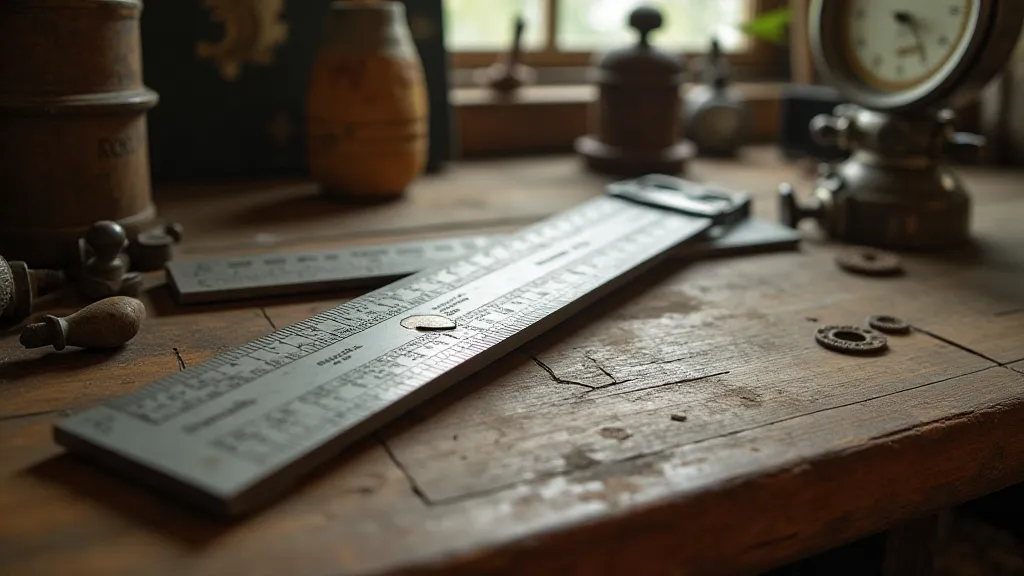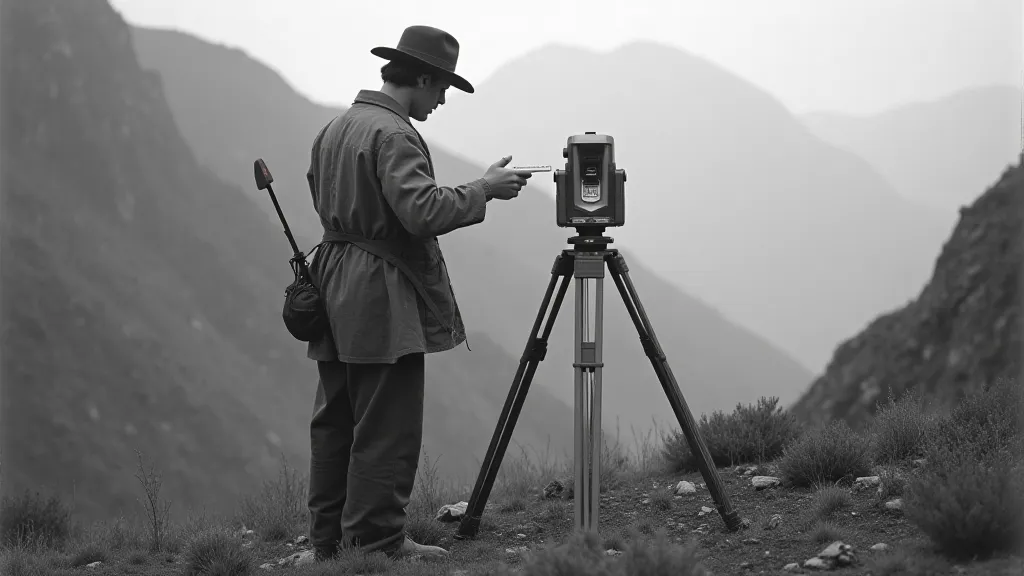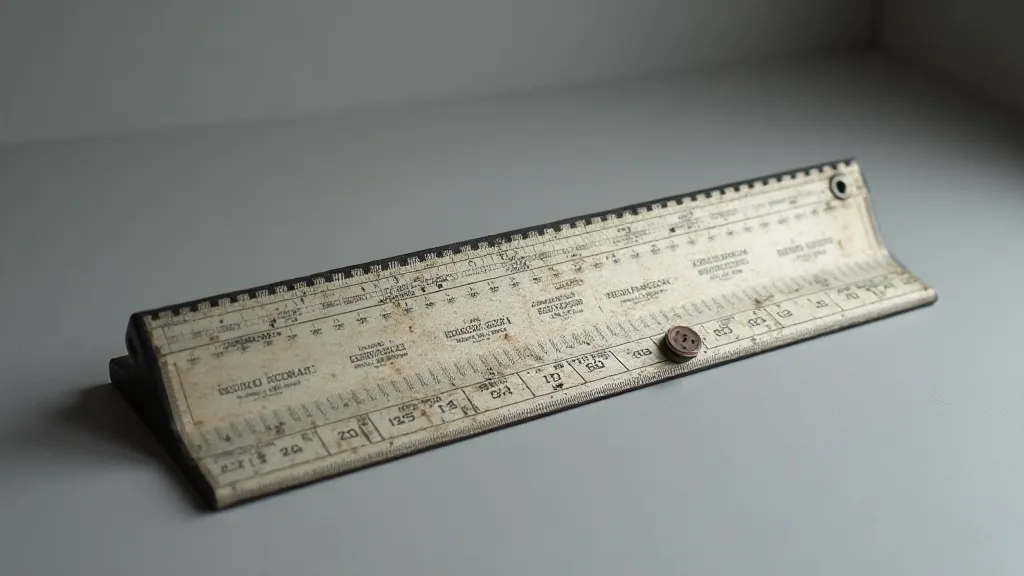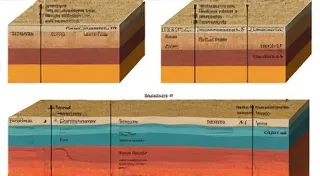The Cartographer's Tool: How Slide Rules Shaped Mapping and Surveying
The satisfying click of a slide rule. It's a sound that resonates with a bygone era, an era where precision and ingenuity were inextricably linked. While digital tools now dominate the landscape of engineering and mathematics, the slide rule holds a unique and poignant place in history – especially within the meticulous world of cartography and surveying. It wasn’s just a calculator; it was an extension of the cartographer's mind, a tactile bridge between abstract numbers and the tangible reality of the earth’s surface.
I remember the first time I encountered a slide rule. It wasn’s in a museum or a collector’s display, but in the dusty workshop of my grandfather, a retired civil engineer. He wasn’t a man of many words, but his eyes would sparkle when he spoke of “his rule.” It wasn’t just a tool; it was a companion, a testament to a different way of working, a physical embodiment of problem-solving. Holding it, feeling the worn edges, you couldn't help but feel a connection to generations of surveyors who relied on these elegant instruments to chart the world.

From Sextants to Scales: The Early Days of Surveying
Before GPS and satellite imagery, cartography and surveying were profoundly more challenging. Early surveyors relied heavily on theodolites, chains, and their own keen observational skills. They were tasked with mapping coastlines, rivers, and territories – often in harsh and unforgiving conditions. The slide rule emerged as an invaluable aid, allowing for complex calculations to be performed efficiently in the field. Trigonometric functions, essential for determining distances and angles, could be solved with remarkable speed. Consider a surveyor tasked with calculating the height of a distant mountain. With a slide rule and some basic trigonometric principles, they could do this relatively quickly, relying on careful measurements and a deep understanding of geometry.
The development of the slide rule itself is fascinating. While the concept of proportional scales dates back to ancient times, the modern slide rule, as we recognize it, began to take shape in the 17th century. William Oughtred is often credited with its formal invention, though many others contributed to its refinement. The evolution from simple proportional scales to the complex, multi-scale instruments used by surveyors is a testament to the ingenuity of engineers and mathematicians. The principles underpinning these instruments truly represent a measure of ingenuity, connecting ancient proportional reasoning to the birth of modern computing.
The Surveyor's Workflow: A Slide Rule Symphony
Imagine a surveyor in the 19th century, mapping a vast stretch of land for a railroad project. They would painstakingly measure distances and angles, recording their observations in a field book. Then, using a slide rule, they would calculate the coordinates of each point, allowing them to create a detailed map of the terrain. The slide rule wasn’t merely a calculator; it was an integral part of their workflow, a tool that enabled them to visualize the terrain and make informed decisions. It required a certain level of skill and understanding – you couldn't just operate a slide rule; you had to understand the underlying mathematics and geometry.
The slide rule facilitated calculations for a multitude of surveying tasks: determining areas and volumes, converting units of measurement, calculating slopes and gradients, and performing complex trigonometric calculations. Navigators, too, benefitted enormously. Calculating longitude at sea was notoriously difficult, and the slide rule provided a means for approximate, yet crucial, solutions. Accuracy wasn't always perfect, but the slide rule allowed for a level of precision that was previously unimaginable.
Beyond Calculation: The Slide Rule as a Cognitive Aid
While we now think of slide rules as purely computational tools, their significance extended far beyond mere number crunching. The physical act of manipulating the slide, observing the scales, and following the steps of a calculation fostered a deeper understanding of the underlying mathematical principles. It was a tactile learning experience that engaged the mind in a way that digital calculators simply can't replicate. The methodical process of using a slide rule, the gradual revealing of an answer, served as a kind of mental scaffolding, aiding in problem-solving and spatial reasoning. This connection between tool and understanding fostered a unique scribe's companion, a culture of precision that permeated numerous fields.

The Decline and Rediscovery: A Legacy Endures
The rise of electronic calculators and, later, computers, inevitably led to the decline of the slide rule. These new technologies offered greater speed and accuracy, seemingly rendering the slide rule obsolete. Yet, its disappearance wasn't complete. A dedicated community of enthusiasts has kept the slide rule's legacy alive, appreciating its inherent beauty, its tactile charm, and the unique mental discipline it demands.
Today, vintage slide rules are increasingly sought after by collectors, engineers, and educators. They represent a tangible link to a time when ingenuity and craftsmanship were paramount. Restoring a vintage slide rule isn’t just about cleaning and repairing it; it’s about preserving a piece of history, connecting with the generations of engineers and surveyors who relied on these remarkable instruments. The process often involves carefully cleaning the scales, repairing any damage to the body, and ensuring that the slides move smoothly. The resurgence in appreciation often stems from the way they shaped the cartographer's compass, aiding in the pursuit of spatial understanding that goes beyond mere calculation.
Appreciating the Craftsmanship: A Glimpse into the Past
Examining a vintage slide rule reveals a level of craftsmanship that is rarely seen in modern mass-produced goods. The precision of the scales, the quality of the materials, the attention to detail – all speak to a time when products were built to last. Pickett, Faber, and Regress were among the most respected manufacturers, and their slide rules are prized for their accuracy and durability. The names, often meticulously engraved on the body, serve as a badge of honor, a testament to the quality of the instrument. It's a reminder that the legacy of these tools extends far beyond simple mathematics; they represent a deep connection to the earth and the art of representation.
Holding a well-preserved slide rule allows you to feel the echoes of the past. You can almost imagine the surveyor, the engineer, the navigator, using this very instrument to solve complex problems and chart the course of discovery. It’s a connection to a time when technology was simpler, more tangible, and more deeply integrated with the human mind. While the digital age has brought undeniable advancements, the slide rule serves as a poignant reminder of the enduring power of ingenuity, craftsmanship, and the human spirit. These echoes resonate with the careful thought given to the weight of legacy, as reflected in modern design principles.

Beyond the immediate task of calculation, the slide rule fostered a deeper understanding of geometric relationships and spatial reasoning. Early cartographers relied heavily on these tools not only to map physical landscapes but also to conceptualize and represent them effectively. The act of physically manipulating the slide, aligning scales, and interpreting results cultivated a unique form of spatial intelligence—a cognitive muscle that, while often overlooked in today's digital age, remains profoundly valuable. Consider the challenges faced by those tasked with accurately depicting vast and unfamiliar territories – relying on meticulous measurement, geometric principles, and a deep understanding of geometry. With the decline of slide rule usage, alternative methods were needed to maintain these spatial reasoning skills.
In conclusion, the slide rule’s influence extends far beyond its role as a simple calculation device. It fostered a culture of precision and innovation, shaped the development of cartography and surveying, and cultivated valuable cognitive skills. While digital technology has largely replaced the slide rule in modern practice, its legacy endures—a testament to the ingenuity of human invention and the enduring power of tangible tools.





